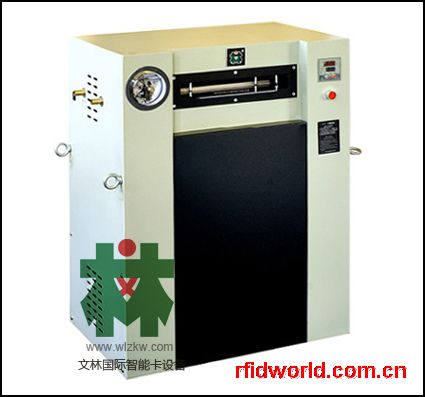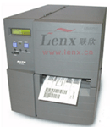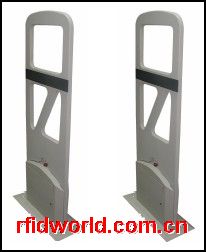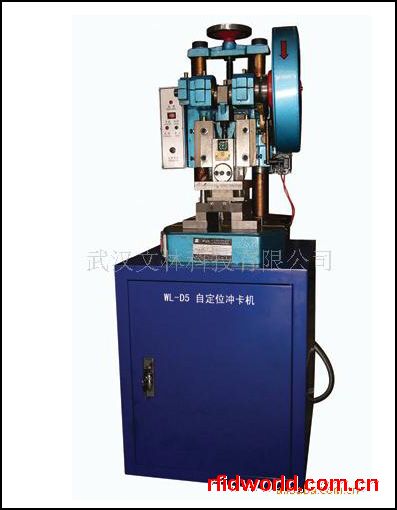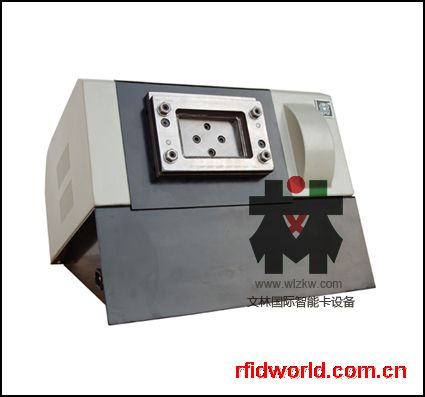RFID世界網(wǎng) >
新聞中心 >
行業(yè)動(dòng)態(tài) >
正文
博物館將鳥類貼上RFID標(biāo)簽進(jìn)行識別
作者:RFID JOURNAL
日期:2007-03-04 11:41:39
摘要:博物館將鳥類貼上RFID標(biāo)簽進(jìn)行識別
關(guān)鍵詞:系統(tǒng)集成
丹麥奧爾胡斯市歷史博物館建立了一個(gè)應(yīng)用RFID技術(shù)的鳥類展廳,以向游客提供更加全面的服務(wù)。此博物館在每只鳥的身上附上了RFID標(biāo)簽,標(biāo)簽含不同的廠商序列號。每一位游客游覽時(shí)將持一只帶RFID識讀器的PDA,這些PDA可以訪問博物館的局域網(wǎng)與鳥類數(shù)據(jù)庫,游客通過向PDA輸入電子郵件,獲得一個(gè)用戶名、密碼,利用這個(gè)用戶名、密碼可以進(jìn)入博物館網(wǎng)站,輕易實(shí)時(shí)獲取鳥類各種信息。
A Danish museum of natural history hatches an RFID-based exhibit on birds to better educate and entertain its visitors
By Farhat Khan Sept. 7, 2004—Many industries have been using RFID technology for commercial purposes. Now one nonprofit organization has embarked on a project that uses RFID to educate and entertain visitors to its museum. Dubbed TaggedX, the project was launched by Museum of Natural History, in Aarhus, Denmark, in conjunction with Innovation Lab and Cordura, which are also based in Aarhus.
To enable the real-time delivery of information for an exhibition entitled “Flying,” the project’s team mounted an RFID tag next to each of the exhibit’s 50 stuffed birds. Embedded with an I-Code RFID chip from Philips Semiconductors, each tag contained a unique factory-programmed serial number that is associated with text, quizzes, and audio and video clips—all stored in a central database—about the bird to which the tag was paired.
In order to identify a bird and receive other information, a visitor uses a PDA equipped with an RFID reader that plugs into the PDA’s CompactFlash slot. The PDA is also equipped with a Wi-Fi card to access the museum’s WLAN and the central database.
The visitors are issued a PDA when they arrive at the museum. After entering their e-mail address into the unit, the user receives an e-mail message containing a login name and password that lets them access the museum’s Web site and the exhibit’s RFID-enabled features.
Once logged in, the visitor can choose between three different modes: encyclopedia, theme and game. Using the encyclopedia mode, a person can access information on any bird just by holding the PDA within 10 centimeters of an RFID tag. In theme mode, the PDA guides the user through the exhibition in accordance with one of several themes, such as “Wings,” “Birds” or “Airplanes.” In game mode, the user is given challenges to solve, such as finding a given bird based on a number of hints provided by the PDA.
Innovation Lab served as TaggedX’s project coordinator and delivered technical equipment such as PDAs. Cordura, which served as the system designer and integrator, installed all the hardware, including the RFID tags, server and Wi-Fi system, and developed the PDA software using Microsoft .net. Beta Technic, based in Vedbaek, Denmark, is the local reseller for Escort Memory Systems and supplied EMS tags and readers.
Because users of the museum’s RFID-enabled system must log on to the system’s server to use it, a record can be made of all the tagged sites within the exhibit the user has visited. The museum can later use this information to see which elements of the exhibit are the most popular and then reconfigure the exhibit if important parts of it are overlooked by guests. After visitors leave the museum, they can use their user name and password to log on to the museum’s Web site and access the same information they had seen during their visit. This feature could be especially useful to students.
The early feedback from users has been very positive, according the project team. Some schoolteachers, however, have noted that during field trips to the museum, students tend to skip the encyclopedic information. If the project team finds this to be a general tendency, they will build additional educational elements into the game mode, says Peter Dreyer, the project coordinator with Innovation Lab.
Within the next few months, Cordura intends to market a similar information-entertainment solution, TaggedX 2.0, to other museums in Denmark, and is currently developing an international version. TaggedX 2.0 consists of a content management system and applications for the PDA, Web site and server.
“We have already seen a great deal of interest,” says Lau Rasmussen, Cordura’s chief RFID system developer. Rasmussen says the technology is simple and inexpensive—the biggest costs are the customization of the user interface and the creation of the database, since most museums do not have exhibit information available in digital format.
A Danish museum of natural history hatches an RFID-based exhibit on birds to better educate and entertain its visitors
By Farhat Khan Sept. 7, 2004—Many industries have been using RFID technology for commercial purposes. Now one nonprofit organization has embarked on a project that uses RFID to educate and entertain visitors to its museum. Dubbed TaggedX, the project was launched by Museum of Natural History, in Aarhus, Denmark, in conjunction with Innovation Lab and Cordura, which are also based in Aarhus.
To enable the real-time delivery of information for an exhibition entitled “Flying,” the project’s team mounted an RFID tag next to each of the exhibit’s 50 stuffed birds. Embedded with an I-Code RFID chip from Philips Semiconductors, each tag contained a unique factory-programmed serial number that is associated with text, quizzes, and audio and video clips—all stored in a central database—about the bird to which the tag was paired.
In order to identify a bird and receive other information, a visitor uses a PDA equipped with an RFID reader that plugs into the PDA’s CompactFlash slot. The PDA is also equipped with a Wi-Fi card to access the museum’s WLAN and the central database.
The visitors are issued a PDA when they arrive at the museum. After entering their e-mail address into the unit, the user receives an e-mail message containing a login name and password that lets them access the museum’s Web site and the exhibit’s RFID-enabled features.
Once logged in, the visitor can choose between three different modes: encyclopedia, theme and game. Using the encyclopedia mode, a person can access information on any bird just by holding the PDA within 10 centimeters of an RFID tag. In theme mode, the PDA guides the user through the exhibition in accordance with one of several themes, such as “Wings,” “Birds” or “Airplanes.” In game mode, the user is given challenges to solve, such as finding a given bird based on a number of hints provided by the PDA.
Innovation Lab served as TaggedX’s project coordinator and delivered technical equipment such as PDAs. Cordura, which served as the system designer and integrator, installed all the hardware, including the RFID tags, server and Wi-Fi system, and developed the PDA software using Microsoft .net. Beta Technic, based in Vedbaek, Denmark, is the local reseller for Escort Memory Systems and supplied EMS tags and readers.
Because users of the museum’s RFID-enabled system must log on to the system’s server to use it, a record can be made of all the tagged sites within the exhibit the user has visited. The museum can later use this information to see which elements of the exhibit are the most popular and then reconfigure the exhibit if important parts of it are overlooked by guests. After visitors leave the museum, they can use their user name and password to log on to the museum’s Web site and access the same information they had seen during their visit. This feature could be especially useful to students.
The early feedback from users has been very positive, according the project team. Some schoolteachers, however, have noted that during field trips to the museum, students tend to skip the encyclopedic information. If the project team finds this to be a general tendency, they will build additional educational elements into the game mode, says Peter Dreyer, the project coordinator with Innovation Lab.
Within the next few months, Cordura intends to market a similar information-entertainment solution, TaggedX 2.0, to other museums in Denmark, and is currently developing an international version. TaggedX 2.0 consists of a content management system and applications for the PDA, Web site and server.
“We have already seen a great deal of interest,” says Lau Rasmussen, Cordura’s chief RFID system developer. Rasmussen says the technology is simple and inexpensive—the biggest costs are the customization of the user interface and the creation of the database, since most museums do not have exhibit information available in digital format.

 登錄
登錄
 注冊
注冊

